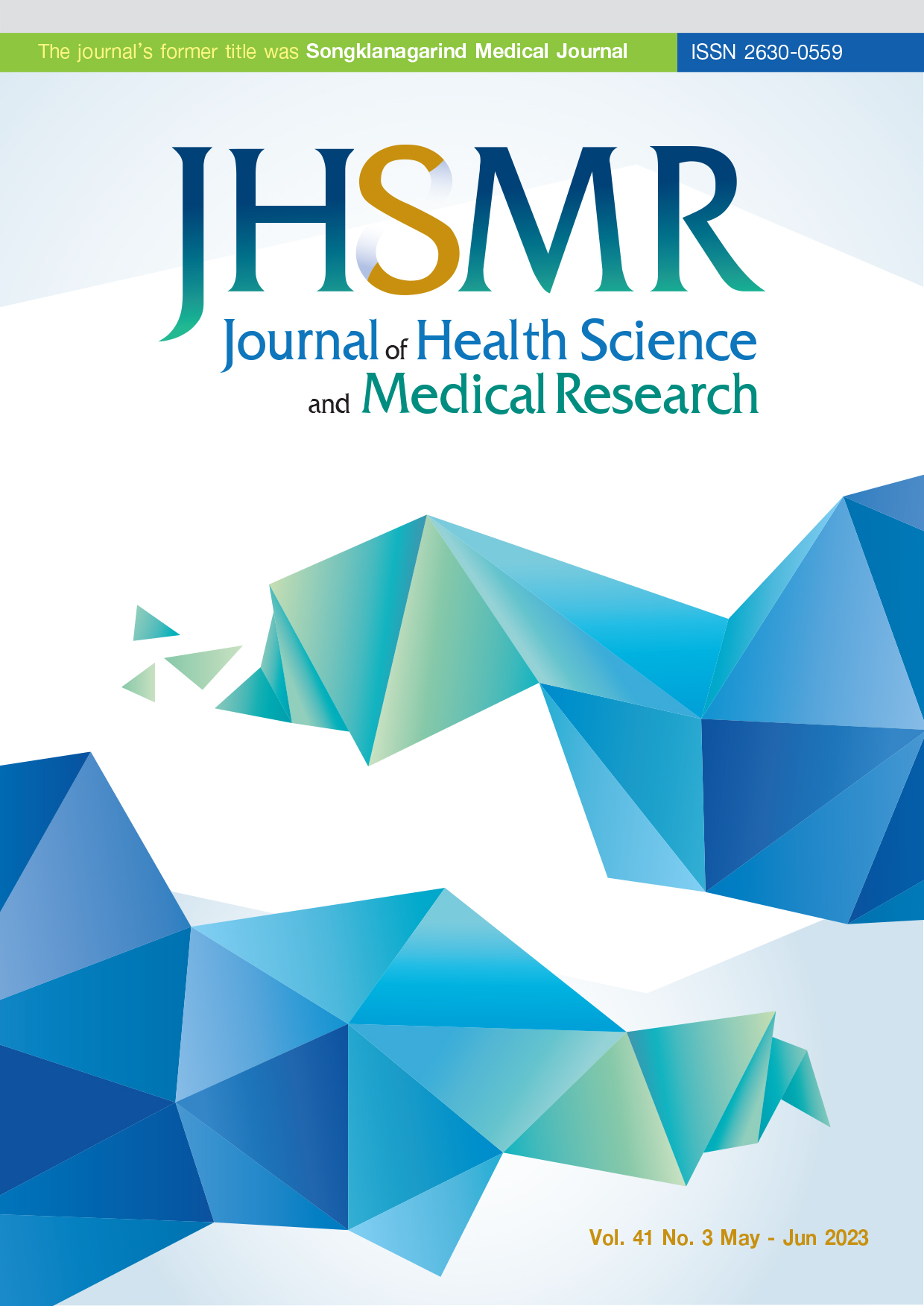Factors Associated with Bone Scintigraphy Positivity in Cholangiocarcinoma
DOI:
https://doi.org/10.31584/jhsmr.2023925Keywords:
biliary cancers, bone metastasis, bone scintigraphy, cholangiocarcinomaAbstract
Objective: To examine factors associated with bone scintigraphy (BS) positivity in cases with cholangiocarcinoma (CCA) to help assess appropriate utilization of BS in CCA patients.
Material and Methods: This cross-sectional study enrolled CCA patients who underwent BS for detection of bone metastasis between January 2012 and July 2020. The BS images were reviewed by two nuclear medicine physicians to assess BS positivity. Factors including tumor location, T stage, regional lymph node metastasis, other distant metastases, and serum carbohydrate antigen 19-9 (CA19-9) were evaluated. Associations between covariates and positive BS were analyzed using bivariate and multiple logistic regressions.
Results: Among 158 CCA patients, 70 (44.3%), 84 (53.2%), and 4 (2.5%) had positive, negative, and equivocal BS, respectively. Of all 70 positive cases, 50 cases (71.4%) had multiple metastatic lesions. The spine was the most common metastatic site (n=55, 78.6%). After exclusion of equivocal cases, 154 were included in the regression models. In bivariate logistic regression, the factors associated with BS positivity were intrahepatic tumor location (OR=2.18, p-value=0.039) and other distant metastasis (OR=2.08, p-value=0.028). Further analysis using multiple logistic regression showed only other distant metastasis was associated with positive BS (OR=2.66, p-value=0.008).
Conclusion: There was a significant association between other distant metastasis and BS positivity in CCA patients. This factor should be considered as a clinical indication for requesting BS in this group of patients.
References
Razumilava N, Gores GJ. Cholangiocarcinoma. Lancet 2014; 383:2168–79.
Banales JM, Marin JJG, Lamarca A, Rodrigues PM, Khan SA, Roberts LR, et al. Cholangiocarcinoma 2020: the next horizon in mechanisms and management. Nat Rev Gastroenterol Hepatol 2020;17:557–88.
Chindaprasirt P, Promsorn J, Ungareewittaya P, Twinprai N, Chindaprasirt J. Bone metastasis from cholangiocarcinoma mimicking osteosarcoma: a case report and review literature. Mol Clin Oncol 2018;9:532–4.
Thammaroj P, Chimcherd A, Chowchuen P, Panitchote A, Sumananont C, Wongsurawat N. Imaging features of bone metastases from cholangiocarcinoma. Eur J Radiol 2020;129: 109118.
Katayose Y, Nakagawa K, Yamamoto K, Yoshida H, Hayashi H, Mizuma M, et al. Lymph nodes metastasis is a risk factor for bone metastasis from extrahepatic cholangiocarcinoma. Hepatogastroenterology 2012;59:1758–60.
Dowsiriroj P, Paholpak P, Sirichativapee W, Wisanuyotin T, Laupattarakasem P, Sukhonthamarn K, et al. Cholangiocarcinoma with spinal metastasis: single center survival analysis. J Clin Neurosci 2017;38:43–8.
Hanna JA, Mathkour M, Gouveia EE, Glynn R, Divagaran A, Lane JB, et al. Cholangiocarcinoma metastasis to the spine and cranium. Ochsner J 2020;20:197–203.
Yang HL, Liu T, Wang XM, Xu Y, Deng SM. Diagnosis of bone metastases: a meta-analysis comparing 18FDG PET, CT, MRI and bone scintigraphy. Eur Radiol 2011;21:2604–17.
Hepatobiliary Cancers (Version 1.2022). In: NCCN Clinical practice guidelines in oncology (NCCN Guidelines) [homepage on the Internet]. Pennsylvania: National Comprehensive Cancer Network; 2022 [cited 2022 May 5]. Available from: https://www. nccn.org/professionals/physician_gls/pdf/hepatobiliary.pdf
Macedo F, Ladeira K, Pinho F, Saraiva N, Bonito N, Pinto L, et al. Bone metastases: an overview. Oncol Rev 2017;11:321.
Singh B, Ramahi A, Chan KH, Kaur P, Guron G, Shaaban H. Diffuse bone metastasis from cholangiocarcinoma involving the sternum: a case report and review of literature. Int J Crit Illn Inj Sci 2021;11:43–6.
Federico A, Addeo R, Cerbone D, Iodice P, Cimmino G, Bucci L. Humerus metastasis from cholangiocarcinoma: a case report. Gastroenterol Res 2013;6:39–41.
MacKenzie SA, Goffin JSO, Rankin C, Carter T. Rare progression of cholangiocarcinoma: distal femoral metastasis. BMJ Case Rep 2017:bcr2016218616.
Karanjia H, Abraham JA, O’Hara B, Shallop B, Daniel J, Taweel N, et al. Distal fibula metastasis of cholangiocarcinoma. J Foot Ankle Surg 2013;52:659–62.
Santini D, Brandi G, Aprile G, Russano M, Cereda S, Leone F, et al. Bone metastases in biliary cancers: a multicenter retro-spective survey. J Bone Oncol 2018;12:33–7.
Martin TA, Ye L, Sanders AJ, Lane J, Jiang WG. Cancer invasion and metastasis: molecular and cellular perspective. Austin: Landes Bioscience; 2013.
Downloads
Published
How to Cite
Issue
Section
License

This work is licensed under a Creative Commons Attribution-NonCommercial-NoDerivatives 4.0 International License.
























